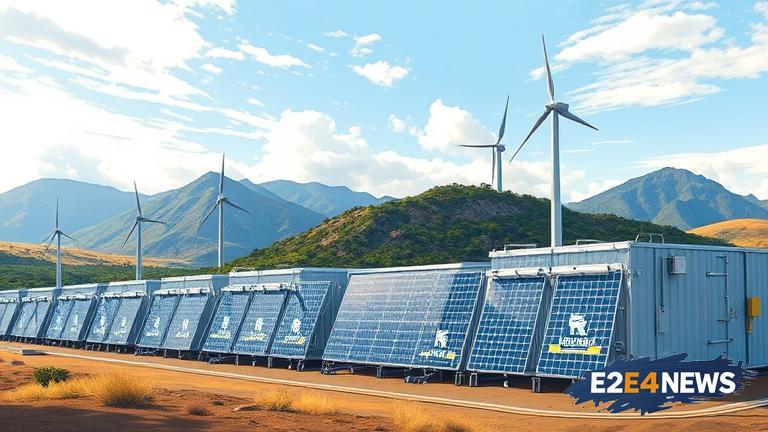The Australian energy storage sector is urging the government to reform the Clean Energy Finance Corporation’s (CEFC) capacity investment scheme to better support long-duration energy storage projects. Currently, the scheme prioritizes short-duration storage solutions, which can lead to grid instability and undermine the effectiveness of renewable energy sources. Industry experts argue that the scheme’s focus on short-duration storage is at odds with the country’s climate goals and its commitment to reducing greenhouse gas emissions. Long-duration energy storage solutions, such as pumped hydro storage and compressed air energy storage, can provide up to 12 hours of backup power, making them essential for ensuring a stable and reliable energy supply. However, these projects are often more capital-intensive and require longer development timelines, making them less competitive under the current scheme. The CEFC’s capacity investment scheme was established to support the development of new energy storage projects, but its design has been criticized for favoring short-duration storage solutions. The scheme’s emphasis on short-duration storage has led to a proliferation of lithium-ion battery projects, which, while effective for short-term grid stabilization, are not suitable for long-term energy storage. In contrast, long-duration energy storage solutions can provide a range of benefits, including improved grid resilience, reduced energy waste, and enhanced renewable energy integration. Despite these benefits, long-duration energy storage projects are struggling to secure funding under the current scheme. Industry experts are calling for the government to reform the scheme to provide more support for long-duration energy storage projects, including the provision of longer-term funding and more favorable financing terms. This could involve the introduction of new funding mechanisms, such as loans or grants, specifically designed to support long-duration energy storage projects. Additionally, the government could consider introducing new policies or regulations to encourage the development of long-duration energy storage solutions, such as mandatory storage targets or tax incentives. The Australian Energy Storage Council has welcomed the government’s commitment to supporting the energy storage sector, but has emphasized the need for a more nuanced approach that recognizes the importance of long-duration energy storage. The council has called for a comprehensive review of the CEFC’s capacity investment scheme, with a view to reforming it to better support long-duration energy storage projects. This review should involve consultation with industry stakeholders and experts, as well as a thorough analysis of the scheme’s effectiveness in supporting the development of new energy storage projects. The government has signaled its willingness to consider reforms to the scheme, with the Minister for Energy and Emissions Reduction stating that the government is committed to supporting the development of new energy storage technologies. However, the minister has also emphasized the need for any reforms to be carefully considered and designed to ensure that they do not undermine the effectiveness of the scheme or create unintended consequences. The energy storage sector is eagerly awaiting the outcome of the government’s review, with many hoping that it will lead to a more supportive policy environment for long-duration energy storage projects. In the meantime, industry experts are continuing to advocate for the importance of long-duration energy storage, highlighting its potential to transform the energy sector and support the transition to a low-carbon economy. As the energy storage sector continues to evolve, it is likely that we will see a growing focus on long-duration energy storage solutions, driven by the need for more resilient and reliable energy systems. The Australian government’s response to this trend will be critical, with the potential to either support or hinder the development of this important technology. Ultimately, the success of the energy storage sector will depend on the government’s ability to create a supportive policy environment that recognizes the importance of long-duration energy storage and provides the necessary incentives and funding to support its development.





